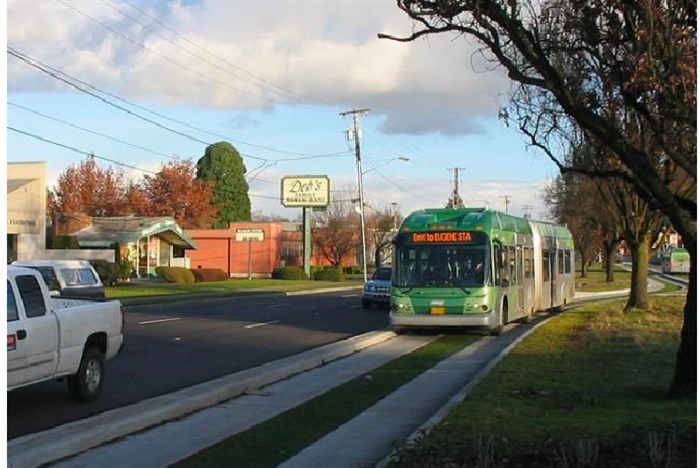Don’t hold your breath waiting for transit to ease gridlock on the highway through Kelowna

Expect it to take 20 years and a bunch more studies before Kelowna moves to the next level in transit that, just maybe, could reduce congestion along Highway 97 through town.
This timeline comes despite that fact that anyone driving through Kelowna at rush hour – which seems to stretch from early morning well into evening – knows the traffic congestion is unbearable.
“One of the key features of the Regional Transportation Plan is to create a fast and reliable transit spine along the Highway 97 corridor,” Mariah VanZerr, the city’s strategic transportation planning manager, told iNFOnews.ca in an email. “This includes a recommendation for further study of adding dedicated transit lanes in the median along Harvey Ave.”
READ MORE: Transit, not a second crossing, is the solution for Central Okanagan's bridge, highways: planners
That plan was the first of its kind for the Central Okanagan and adopted in December 2018.
A 2018 study, called How Transit Can Keep Kelowna Moving, provided some details about transit options. A chart in that report shows there were about 75 residents and jobs per hectare along the highway corridor.
It says half of the city’s jobs are within 800 metres of the highway but only about 15% of the city's residents are within walking distance of those jobs.
A separate chart seems to show that a density of 50 people and jobs per ha are needed for regular bus service and 100 per hectare for a streetcar service.
It shows the highway corridor could reach that level by 2040.
And just a streetcar, which would share the travel lanes with regular traffic was estimated in 2018 to cost $32 to $57 million per kilometre to build.
A cheaper option would be a “bus rapid transit” which creates a dedicated bus lane separate from the roadway. It was estimated to cost $3-$14 million per kilometre to build but would need a population/jobs density of 200,000.
While the Regional Transportation Plan talks about transit improvements to reduce congestion, nothing is in the works.
In fact, the city and region are waiting for the province to complete two other plans.
Those are a Regional Goods Movement Study and the Central Okanagan Integrated Transportation Strategy. The latter is expected to “develop an integrated plan to improve the highway corridor for the next 20 years,” VanZerr wrote in her email.
The current thinking seems to favour a dedicated bus lane, possibly in the middle of the highway, that may one day be made into a light rapid transit system (once the city’s population triples to 500,000).
Both plans are expected to be finished early next year and “will help inform the next steps (e.g. corridor planning, public engagement, preliminary and final design, property and right-of-way considerations, cost estimates, etc.) before projects can be advanced to construction (contingent upon future provincial and local funding),” VanZerr wrote.
In other words, don’t hold your breath waiting.
To contact a reporter for this story, email Rob Munro or call 250-808-0143 or email the editor. You can also submit photos, videos or news tips to the newsroom and be entered to win a monthly prize draw.
We welcome your comments and opinions on our stories but play nice. We won't censor or delete comments unless they contain off-topic statements or links, unnecessary vulgarity, false facts, spam or obviously fake profiles. If you have any concerns about what you see in comments, email the editor in the link above.



